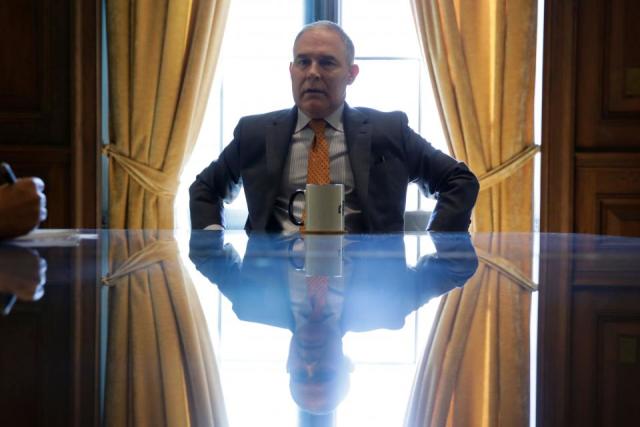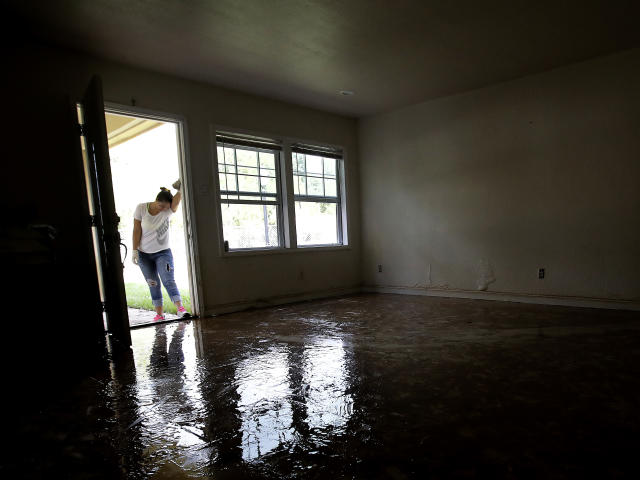THE WEEK Opinion: The death rattle of the Trump evangelicals
Paul Waldman September 7, 2017
 AP Photo/Evan Vucci
AP Photo/Evan Vucci
One of the many fascinating results of the 2016 election was that despite his history of enthusiastic sinning and his transparently phony professions of faith, Donald Trump won 81 percent of the votes of white evangelical Christians, which no candidate had matched since the question has been asked in exit polls. There are multiple reasons why, but at their root lies a changing society that has many conservative Christians feeling threatened and outnumbered.
Just how outnumbered? As a large new survey from the Public Religion Research Institute shows, a remarkable shift has taken place: White Christians are no longer a majority of Americans.
If you’re a millennial, that may not strike you as odd, since depending on where you live, you’ve probably grown up in a world where you took a good deal of diversity for granted. But if you’re over 40 or so, it’s positively earth-shaking. As the authors of the study note, in 1976, fully 81 percent of Americans identified as white and members of a Christian denomination. Today it’s only 43 percent.
That’s the result of two things happening simultaneously. The first is that America’s racial demographics are steadily evolving, with minority groups, particularly Hispanics, increasing their proportion of the population. In 1980 Hispanics were only 6.5 percent of the population, but today they’re over 17 percent.
At the same time, the population is becoming less religious. The group of religiously unaffiliated people — which includes atheists, agnostics, and those who say they don’t belong to any particular faith — has been rapidly growing, and now encompasses a quarter of the population. Even more importantly, young people are much less religious in general and much less likely to identify as Christian than older people. Take a look at this striking chart:
While 63 percent of Americans over the age of 65 are white Christians, only 24 percent of those under the age of 30 are, a group far outnumbered by the 38 percent of young adults who are unaffiliated. Unless there’s some kind of dramatic Christian awakening that produces millions of converts, that means that in the future the ranks of Christians in general and white Christians in particular are likely to shrink.
We should note that America is still easily the most religious of the advanced industrial democracies; when it comes to faith, we look more like a developing country than like our peers in Europe. One key reason is probably our tradition of religious liberty and the proliferation of faiths in America; in much of Europe for much of recent history, religion meant only the strict and stodgy Catholic Church or your country’s official Protestant denomination, which many populations were only too eager to turn away from as their societies progressed into the modern age. In America it was always possible to reject the religion of your parents and still find a church more to your liking somewhere else.
But up until now, white Christians knew that their faith, at least in the broadest terms, was the default setting for the country. Slowly that began to change, and with that change came the emergence of a new ideology, one that says that if we’re a diverse society, then maybe everyone’s traditions should be worthy not just of grudging tolerance, but of actual respect. Maybe — just to take one example — when a department store is decorating for the holidays, they’ll put up a sign that’s inclusive of everyone, and not exclusive to Christians.
Many Christians greeted that kind of change by saying, “Well of course that’s how we ought to act.” But not all of them. Spurred on by the grievance-mongers at Fox News, many decided that a “Happy Holidays” sign was a deeply offensive attack on their religion and symbolized everything terrifying about their diminished status.
Then came Trump. He didn’t mince words about having an inclusive society; instead, he just said outright that he was going to advocate for Christianity. When he went to Liberty University in January 2016, he was roundly mocked for referring to “Two Corinthians” instead of “Second Corinthians” (no biblical scholar he), but what really mattered was what he said afterward. “Is that the one?” he asked the crowd. “Is that the one you like? I think that’s the one you like.” No other candidate could not just pander but literally announce the fact that he was pandering — and still wind up winning the target of that pandering by an overwhelming margin.
If Trump does what they want, they don’t much care whether he’s sincere. “How about all those department stores?” he asked at a post-election rally, standing amid a forest of Christmas trees. “They have the bells and they have the red walls and they have the snow, but they don’t have ‘merry Christmas’? I think they’re gonna start putting up ‘merry Christmas.'” But if current trends continue, the Democratic Party will get more and more diverse while the GOP will continue to be the party of white Christians, a shrinking portion of the electorate.
That may not be an immediate threat to Republicans in places where they dominate, particularly in the South and Midwest. But it shows that in the years to come, they’re going to find themselves more and more alienated from a nation that’s changing around them. So far, they show little inclination to do much about it.
of The Week magazine.


 Environmental Protection Agency Administrator Scott Pruitt speaks during an interview for Reuters at his office in Washington, U.S., July 10, 2017. Yuri Gripas/Reuters
Environmental Protection Agency Administrator Scott Pruitt speaks during an interview for Reuters at his office in Washington, U.S., July 10, 2017. Yuri Gripas/Reuters File Photo: Oklahoma Attorney General Scott Pruitt testifies before a Senate Environment and Public Works Committee confirmation hearing on his nomination to be administrator of the Environmental Protection Agency in Washington, U.S., January 18, 2017. REUTERS/Joshua Roberts/File Photo
File Photo: Oklahoma Attorney General Scott Pruitt testifies before a Senate Environment and Public Works Committee confirmation hearing on his nomination to be administrator of the Environmental Protection Agency in Washington, U.S., January 18, 2017. REUTERS/Joshua Roberts/File Photo
 PNM, the largest electricity provider in New Mexico, has more than 1 million solar panels at 15 different solar sites to provide clean energy for the state.
PNM, the largest electricity provider in New Mexico, has more than 1 million solar panels at 15 different solar sites to provide clean energy for the state. Houston is home to about 575,000 undocumented immigrants, the third largest population in the United States. Getty
Houston is home to about 575,000 undocumented immigrants, the third largest population in the United States. Getty There have been dozens of Hurricane Harvey-related deaths since it made landfall in Texas over the weekend. Getty
There have been dozens of Hurricane Harvey-related deaths since it made landfall in Texas over the weekend. Getty Houston’s Gallery Furniture store took in families like Maria’s Sunday night. Getty
Houston’s Gallery Furniture store took in families like Maria’s Sunday night. Getty